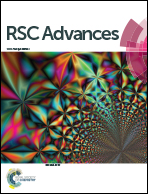Rational design of the electrode morphology for oxygen evolution – enhancing the performance for catalytic water oxidation
Abstract
The fundamental understanding of the electrode/electrolyte interface is of pivotal importance for the efficient electrochemical conversion and storage of electrical energy. However, the reasons for the low rate of electrocatalytic oxygen evolution and issues of long-term material stability, which are central constraints for attaining desirable efficiency for sustainable technologies like water electrolysis or electrochemical CO2 reduction, are still not completely resolved. While a lot of attention has been directed towards the search for new materials with unique (electro)catalytic properties, experimental results accumulated during the last four decades and prediction from models suggest that RuO2 possesses superior activity for oxygen evolution under acidic conditions. Considering that RuO2 is a material of choice, we show that tailoring the surface morphology on the meso- and macroscale has great potential for the improvement of the efficiency of this gas evolving reaction. Advanced analytical tools have been utilized for the combined investigation of both activity and stability. Namely, the potential dependent frequencies of gas-bubble evolution, an indicator for the activity of the electrode, were acquired by scanning electrochemical microscopy (SECM), while the dissolution of RuO2 was monitored using a micro electrochemical scanning flow cell combined with an inductively coupled plasma mass spectrometer (SFC-ICP-MS). The obtained fundamental insights will aid improving the design and thus performance of electrode materials for water oxidation.


 Please wait while we load your content...
Please wait while we load your content...